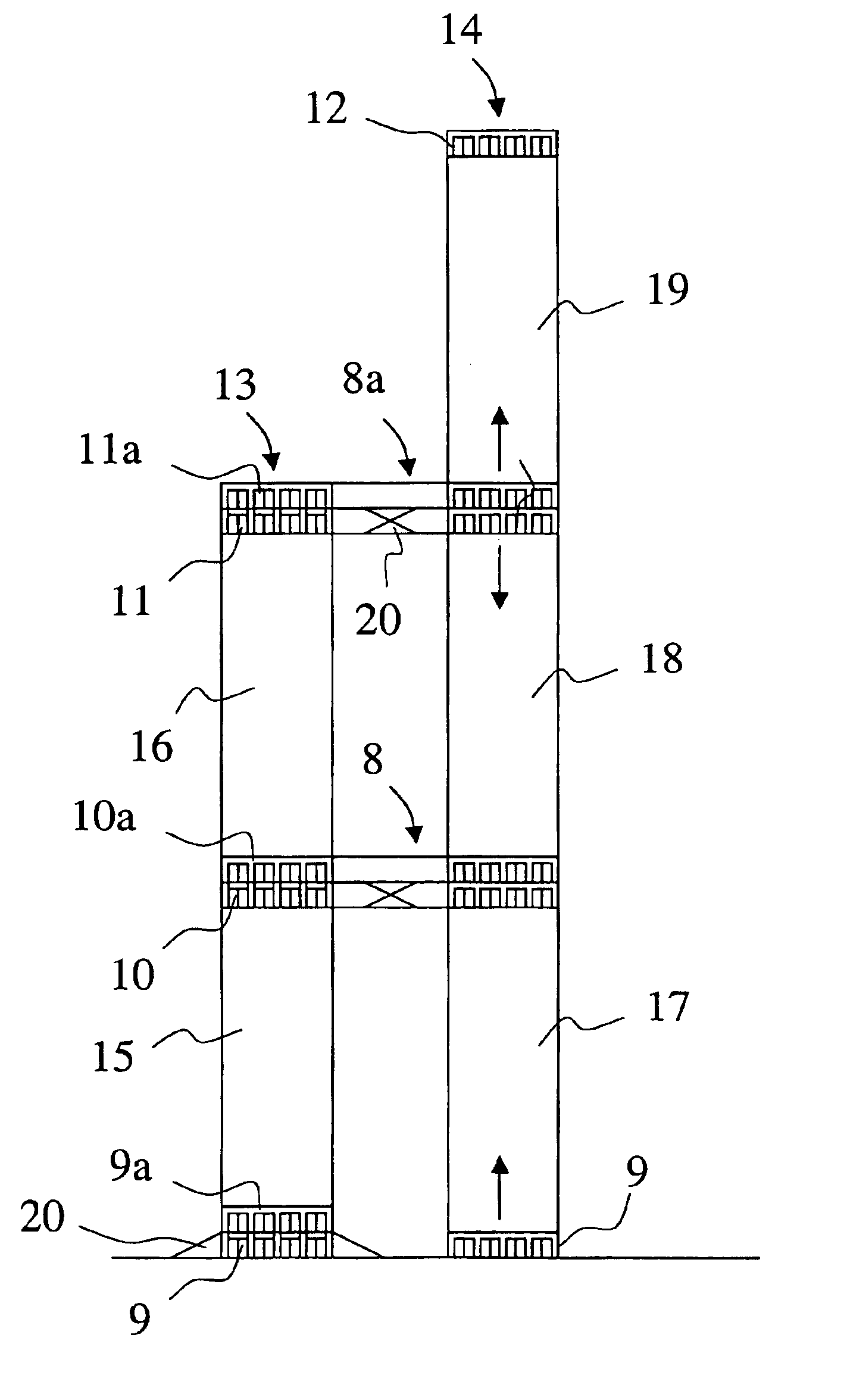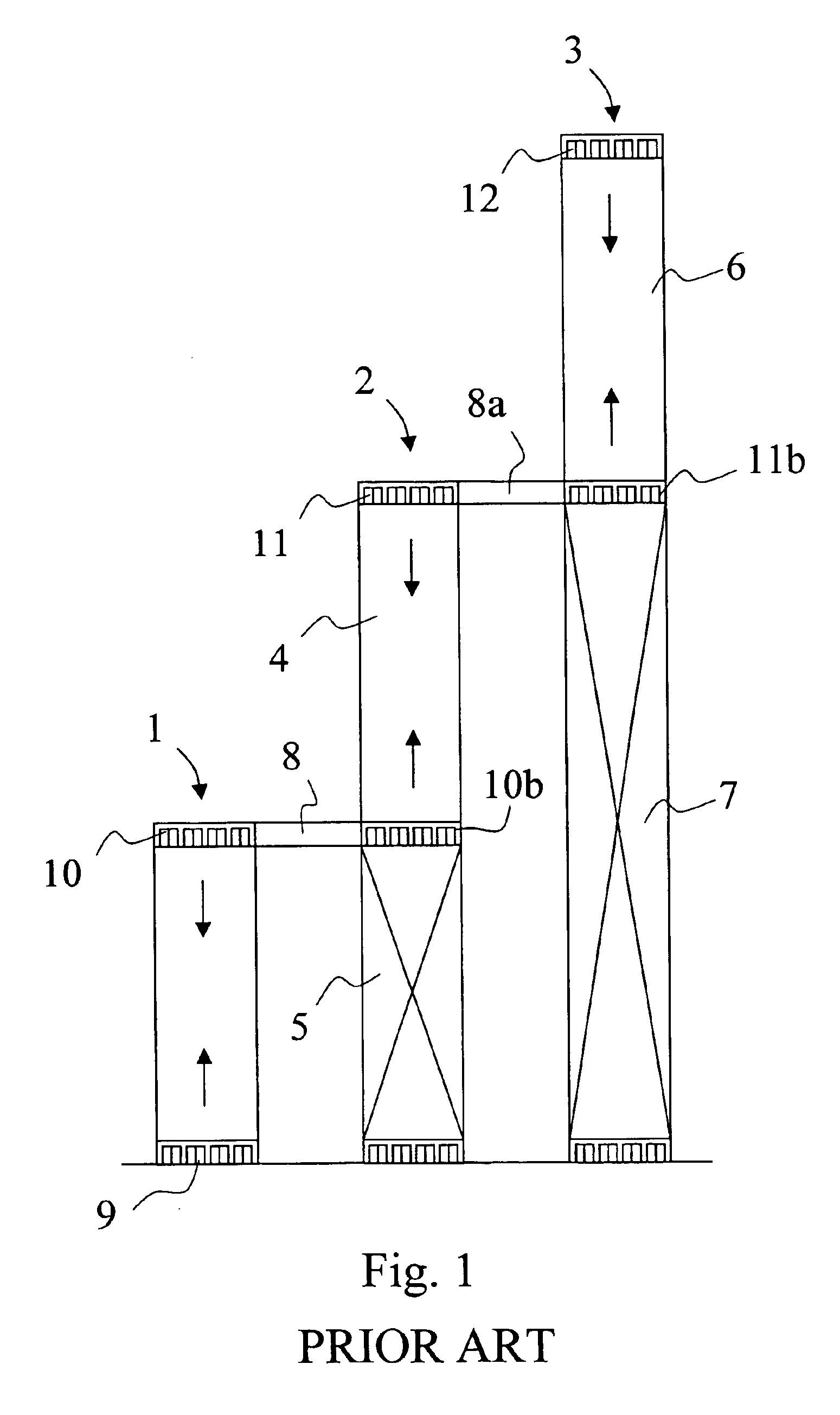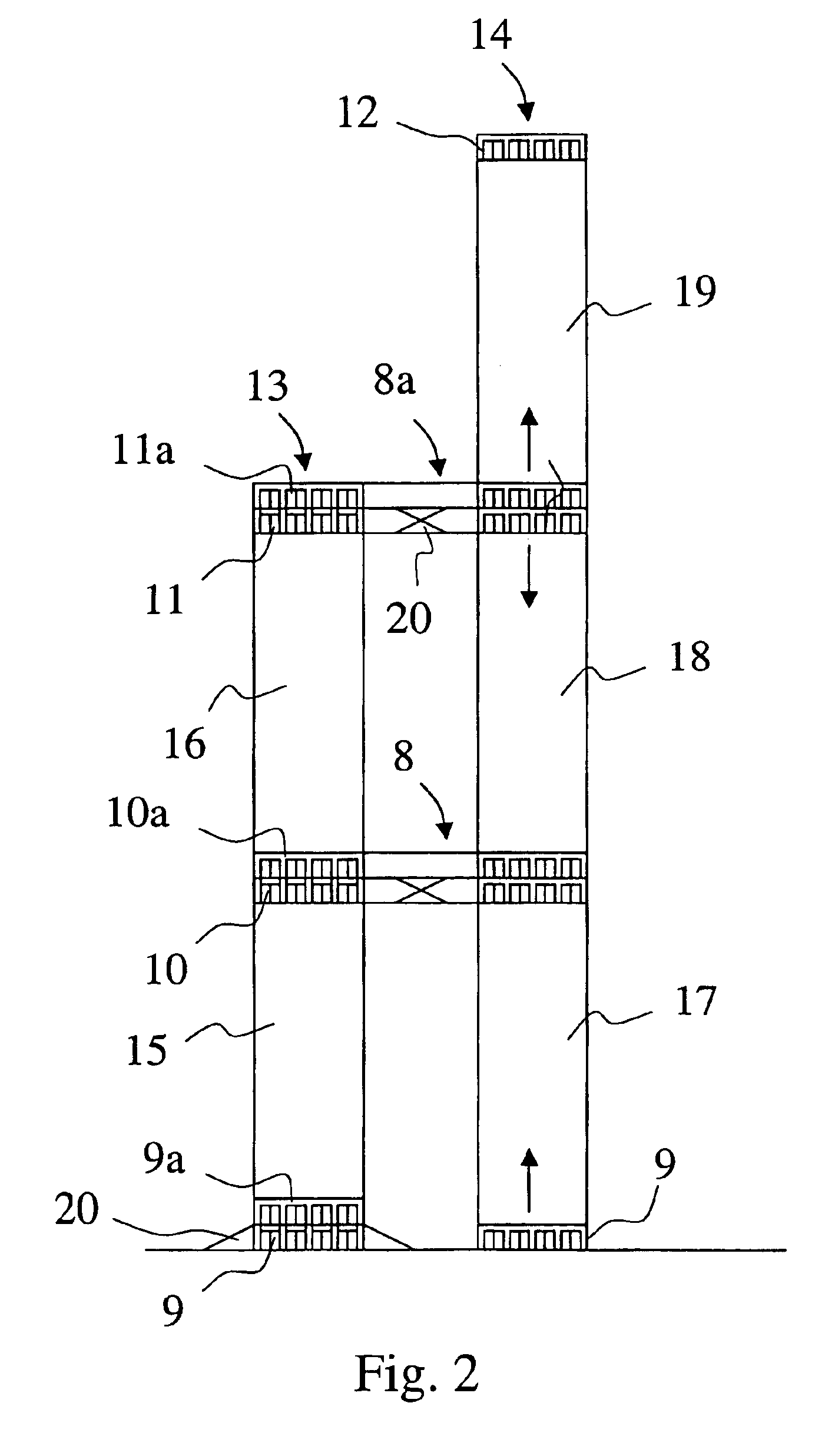Elevator system with one or more cars moving independently in a same shaft
a technology of elevator system and elevator shaft, which is applied in the direction of elevator, building lift, transportation and packaging, etc., can solve the problems of system not being able to move independently, system may still get out of order, exact collision risk, etc., and achieve reliable and well-functioning
- Summary
- Abstract
- Description
- Claims
- Application Information
AI Technical Summary
Benefits of technology
Problems solved by technology
Method used
Image
Examples
Embodiment Construction
The solution illustrated in FIG. 1 represents the aforesaid prior-art elevator system for tall buildings. Let us consider e.g. a 45-floor building with fifteen floors in each zone. The number of floors in each zone is determined by the number of elevators and the car size and speed of the elevators. The system comprises three different height zones, so it requires three different banks of elevator shafts 1, 2 and 3, of which bank 1 forms the lowest zone, which comprises e.g. a group of eight elevators serving all fifteen lowest floors from the ground floor 9 to the highest floor 10 of the zone. FIG. 1 only shows the elevator doors of four elevators on the ground floor 9 and the highest floor 10 of the zone. Within this zone, the elevators can stop at any floor.
The second zone in the prior-art elevator system is a so-called mid-zone, which may also comprise a group of eight elevators in a separate bank of elevator shafts 2, which now serves only the ground floor 9, the first transfer...
PUM
 Login to View More
Login to View More Abstract
Description
Claims
Application Information
 Login to View More
Login to View More - R&D
- Intellectual Property
- Life Sciences
- Materials
- Tech Scout
- Unparalleled Data Quality
- Higher Quality Content
- 60% Fewer Hallucinations
Browse by: Latest US Patents, China's latest patents, Technical Efficacy Thesaurus, Application Domain, Technology Topic, Popular Technical Reports.
© 2025 PatSnap. All rights reserved.Legal|Privacy policy|Modern Slavery Act Transparency Statement|Sitemap|About US| Contact US: help@patsnap.com



